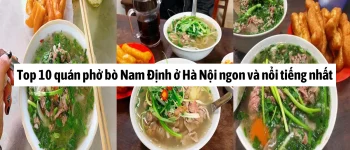
Starting from 0:00 on May 15, Vietnam opens its doors to all travelers. No self-isolation is required, and the regulations for SARS-CoV-2 testing before entering will be temporarily suspended. This is great news for those itching to explore the beauty of Vietnam. If you’ve been dreaming about embarking on a memorable journey, now is the time to make it happen.
Here are the key points you should know:
Visa and Travel Insurance Update
Visa and travel insurance are now accepted for entry into Vietnam. The process of obtaining a visa is now smoother than ever before, making it easier for tourists to dive into the vibrant Vietnamese culture.
Visa Exemption and Extensions
Visitors from certain countries can enter Vietnam visa-free for a specific number of days. For example, some Asian countries such as Brunei, Myanmar, Japan, South Korea, and the Philippines enjoy visa-free entry for up to 30 days. European countries like Belarus, Denmark, Italy, Russia, and the United Kingdom have a visa exemption period of 15 days.
If you plan to stay longer than the visa-free duration, don’t worry. You can easily apply for a visa extension upon your arrival in Vietnam. It’s a simple process that allows you to prolong your stay and explore more of this captivating country.
Apply for a Vietnam E-visa
Applying for a tourist e-visa is now more convenient than ever. You can easily apply online, and the processing time is only three working days. The e-visa fee is USD 25, and you will receive your visa code by email. Simply print it out, and you’re ready to go.
Health and Safety Measures
Vietnam takes the health and safety of its visitors seriously. Incoming travelers are required to follow the guidelines set by the Ministry of Health. Starting from May 15, pre-entry SARS-CoV-2 test requirements are temporarily suspended. There is no requirement for quarantine upon arrival.
However, it’s crucial to self-monitor your health within 10 days from the date of entry. If you develop symptoms of SARS-CoV-2 infection, such as fever, cough, sore throat, or difficulty breathing, it is important to immediately notify the nearest medical facility for guidance.
How to Apply for Vietnam’s E-Visa
Applying for a Vietnam e-visa is a straightforward process:
Step 1: Prepare the required materials, including a passport photo, a photo of your passport data page, a valid passport, and your temporary address in Vietnam.
Step 2: Visit this link or access https://immigration.gov.vn/ and go to ‘E-visa Issuance’. Click on the link for ‘Outside Vietnam foreigners’.
Step 3: Upload the necessary images and fill out the form completely. Submit your application.
Step 4: Pay the e-visa fee of USD 25 and make a note of the document code provided.
Step 5: Within three working days, you will receive news of your e-visa application via email. In case you don’t, you can search for your e-visa here.
Step 6: Use your document code to locate and download your e-visa online. Print two copies for safekeeping.

Travel Insurance Requirement
To ensure your peace of mind during your trip, it is recommended to purchase medical and travel insurance that covers COVID-19 treatment. A minimum coverage of $10,000 is typically required. This minor investment goes a long way in protecting your health and well-being while exploring the wonders of Vietnam.
Health Checks on Departure
For domestic travel, it is essential to follow the Ministry of Health’s guidelines. During the first 10 days from the date of entry, tourists are advised to continue self-monitoring their health and practice the ministry’s 4K message: khau trang (face masks), khu khuan (disinfection), khoang cach (distancing), and khong tu tap (no gatherings).
For international travel, it is crucial to adhere to the guidelines and procedures published by the country you are returning to. Stay informed and stay safe.
Health and Safety Precautions
While traveling in Vietnam, it’s important to take sensible precautions against COVID-19. Follow these basic practices recommended by the World Health Organization:
-
Avoid traveling if you have a fever and cough. Contact healthcare services if you experience these symptoms.
-
Maintain social distancing. Keep a distance of at least one meter from others, especially those who are sneezing, coughing, or have a fever.
-
Wash your hands regularly. Use soap and running water. Alternatively, use an alcohol-based hand sanitizer.
-
Cover your mouth and nose when coughing or sneezing. Use a tissue and dispose of it immediately. Wash your hands afterward.
-
Avoid contact with live animals. If you do touch them, wash your hands thoroughly.
-
Eat only well-cooked food. Ensure your meals, especially animal proteins and dairy products, are prepared in a sanitary environment.
-
Dispose of single-use masks properly. If you wear a mask, make sure it covers your nose and mouth. Avoid touching it and wash your hands after removing it.

Remember, your safety and well-being are of paramount importance. That’s why Vietnam has appointed 323 authorized testing facilities for COVID-19, should the need arise. For any concerns or symptoms, don’t hesitate to call Vietnam’s health hotline at 1900 3228.
For the most up-to-date travel advisory and information on the COVID-19 situation in Vietnam, visit Ekilove. Vietnam’s guidelines and requirements may change based on the current conditions determined by the government.
Now is the perfect time to experience the incredible beauty and rich culture of Vietnam. So pack your bags, embrace the adventure, and get ready to create memories that will last a lifetime.






